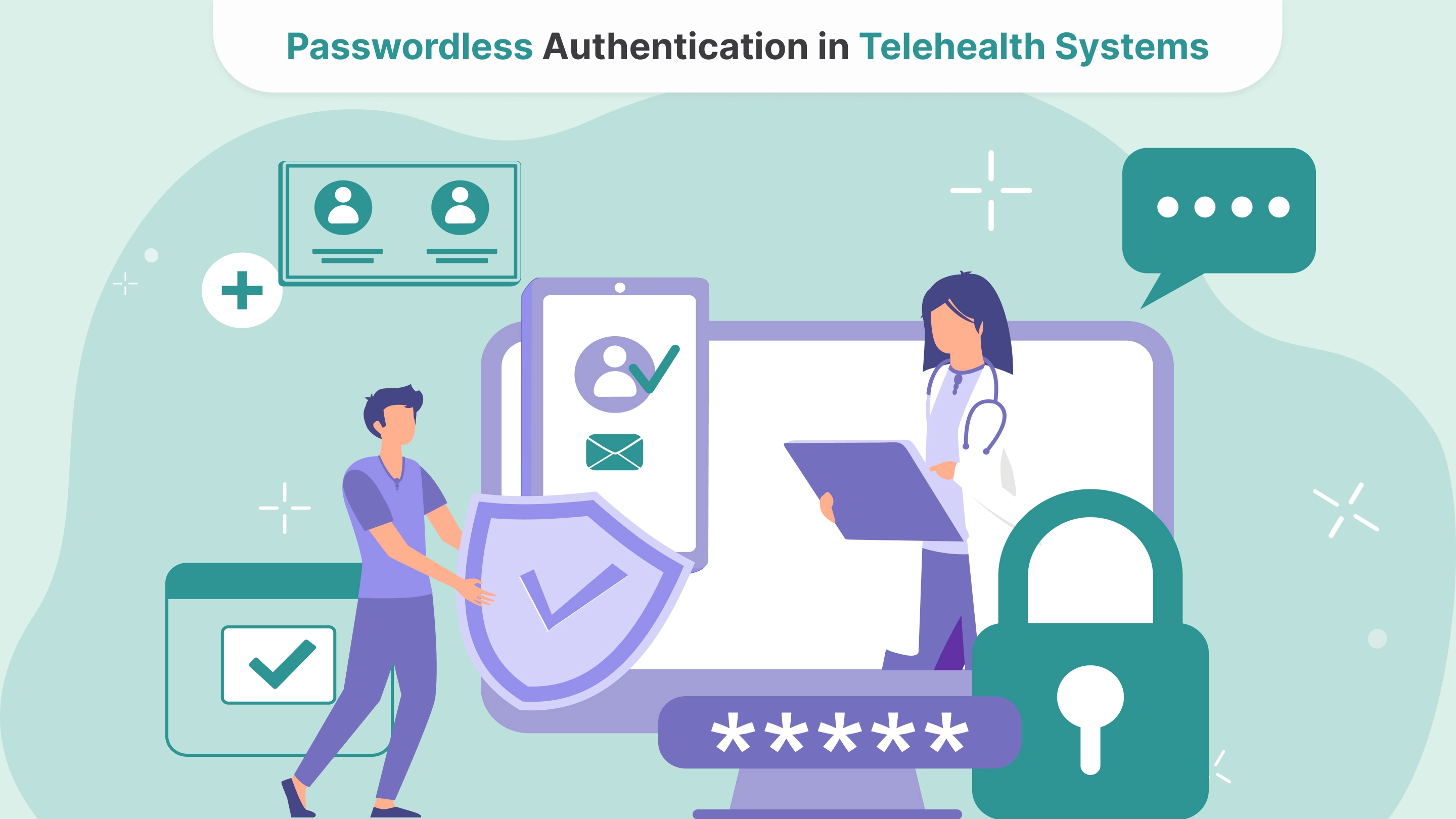

Unlocking Modern Healthcare Security: A Journey Beyond Passwords
Healthcare professionals rely on multiple applications daily, and with the ever-growing number of healthcare-focused apps, the challenge of managing access has become more complex. Despite the convenience of single sign-on solutions, the time spent typing in passwords adds up quickly. This process not only detracts from patient care but also creates a major hassle, as clinicians juggle numerous unique, often complex passwords. Even worse, password management can incur significant costs for health systems, which frequently have to fund help desks to assist users in resetting forgotten credentials.
While experts have been predicting the death of passwords for decades, they still persist. However, innovations like biometrics, browser-based Web Authentication API (WebAuthn), and push notifications are providing organizations with new, more secure avenues to go passwordless.
The Case for Passwordless Authentication
The limitations of passwords are becoming more pronounced as cybercriminals adopt advanced tools like artificial intelligence to enhance their attack strategies. AI has boosted the efficacy of common attacks such as phishing, and it can also be leveraged to crack passwords more easily. In a worrying report from Keeper in March 2024, 52% of IT leaders admitted that their teams struggle with frequent password theft, which poses significant risks, especially when sensitive patient data is at stake.
The desire to move away from passwords isn’t just a trend within healthcare. According to a 2023 Bitwarden survey, 56% of internet users expressed excitement about the concept of passwordless authentication. This enthusiasm is well-placed, as healthcare organizations stand to gain in multiple ways by going passwordless. CyberArk, a security vendor, emphasizes, “Passwordless Authentication strengthens security by eliminating risky password management practices and reducing attack vectors. It also enhances user experiences by alleviating password fatigue.”
Tools That Enable Passwordless Authentication
A variety of technologies can help healthcare organizations transition to passwordless authentication. Among the most promising are biometric solutions. Biometric authentication is defined as a process that uses unique biological characteristics — such as fingerprints, facial recognition, eye patterns, and voice analysis — to verify a user’s identity. Because these biological identifiers are difficult to replicate or hack, biometrics provide a higher level of security while also being more convenient for users.
Biometric authentication improves the overall user experience, especially for busy clinicians. By implementing continuous authentication, healthcare organizations can ensure that users’ identities are verified at regular intervals during system use. This approach not only boosts security but also frees up clinicians to focus on patient care.
Push notifications offer another streamlined, secure option for passwordless authentication. Solutions like Microsoft Authenticator can send a push notification directly to a user’s mobile device, allowing them to approve or deny access attempts with a single click. This method simplifies the login process while maintaining security.
Web Authentication API (WebAuthn) provides yet another powerful option for passwordless authentication. Created by the FIDO Alliance and the World Wide Web Consortium, WebAuthn uses public key cryptography instead of traditional passwords. By generating a private-public key pair, the API allows organizations to verify users through authenticators built into devices, ensuring that only authorized personnel can access sensitive information.
Other passwordless tools include smart cards, QR codes, and mobile one-time passcode generators such as Google Authenticator. Experts urge healthcare organizations to start exploring how they can implement these technologies to eliminate the risks and inefficiencies of password management.
The time for passwordless authentication is here, and organizations should start moving toward it. Although challenges remain, particularly with multifactor authentication for critical systems, the benefits far outweigh the hurdles.
Passwordless Authentication in Telehealth Systems

The adoption of telehealth platforms has surged in recent years, especially during the COVID-19 pandemic, enabling remote patient consultations and monitoring. With the growing reliance on telehealth comes an increased need for secure and seamless access to these platforms. Passwordless authentication offers an ideal solution for telehealth providers who manage multiple user accounts for both patients and healthcare professionals. By integrating passwordless options like biometrics or push notifications, telehealth systems can ensure a frictionless experience while safeguarding sensitive patient information.
Telehealth is particularly vulnerable to security breaches due to the sensitive nature of health data and the often remote nature of access. Eliminating passwords reduces the risk of phishing attacks and password theft in these environments. Additionally, continuous biometric authentication can help monitor the identity of the healthcare professional throughout the teleconsultation, further ensuring that the right person is accessing the system during the entire session.
This move to passwordless telehealth systems not only strengthens security but also enhances patient trust in remote care platforms, making it a crucial next step for the industry.
The Role of Artificial Intelligence in Enhancing Passwordless Security
Artificial intelligence (AI) plays a growing role in advancing passwordless authentication technologies. As AI improves, it helps healthcare organizations enhance security measures by automating the authentication process and detecting potential threats more efficiently. For instance, AI algorithms can analyze user behavior patterns — such as typing speed, device usage, and location — and flag unusual activity that may signal an unauthorized access attempt.
Additionally, AI supports the implementation of continuous authentication by analyzing users' biometric data, such as facial recognition or voice patterns, in real time. If any deviations are detected, the system can immediately log the user out or prompt additional authentication steps. This use of AI significantly reduces the chances of data breaches and ensures that healthcare providers maintain high levels of security without disrupting their workflows.
As cyber threats evolve, AI will continue to play an essential role in refining and advancing passwordless technologies, making them even more secure and reliable for healthcare systems.
Conclusion: The Future of Healthcare Authentication
Passwordless authentication promises a more secure, efficient future for healthcare organizations. In an industry where both patient care and sensitive data are on the line, adopting stronger authentication methods is critical. Healthcare leaders must prioritize these technologies, recognizing that the time for change is now. With innovations such as biometrics, WebAuthn, AI-driven security, and push notifications, the end of passwords may finally be in sight.
Faq
What are the benefits of passwordless authentication in healthcare?
+Passwordless authentication enhances security by eliminating the vulnerabilities associated with passwords, reducing costs related to password management, and improving user experiences. Clinicians can spend less time managing login credentials and more time focusing on patient care.
How do biometric solutions work in healthcare settings?
+Biometric authentication uses unique biological traits like fingerprints, facial recognition, and voice patterns to verify identity. These traits are nearly impossible to replicate, offering a higher level of security while streamlining access for healthcare professionals.
Is it difficult to implement passwordless authentication in healthcare?
+Transitioning to passwordless authentication may involve some initial setup, but a range of tools, including biometrics, WebAuthn, and push notifications, can simplify the process. Many healthcare organizations are already exploring these technologies to improve security and operational efficiency.
Tell us about your project
Fill out the form or contact us

Tell us about your project
Thank you
Your submission is received and we will contact you soon
Follow us
